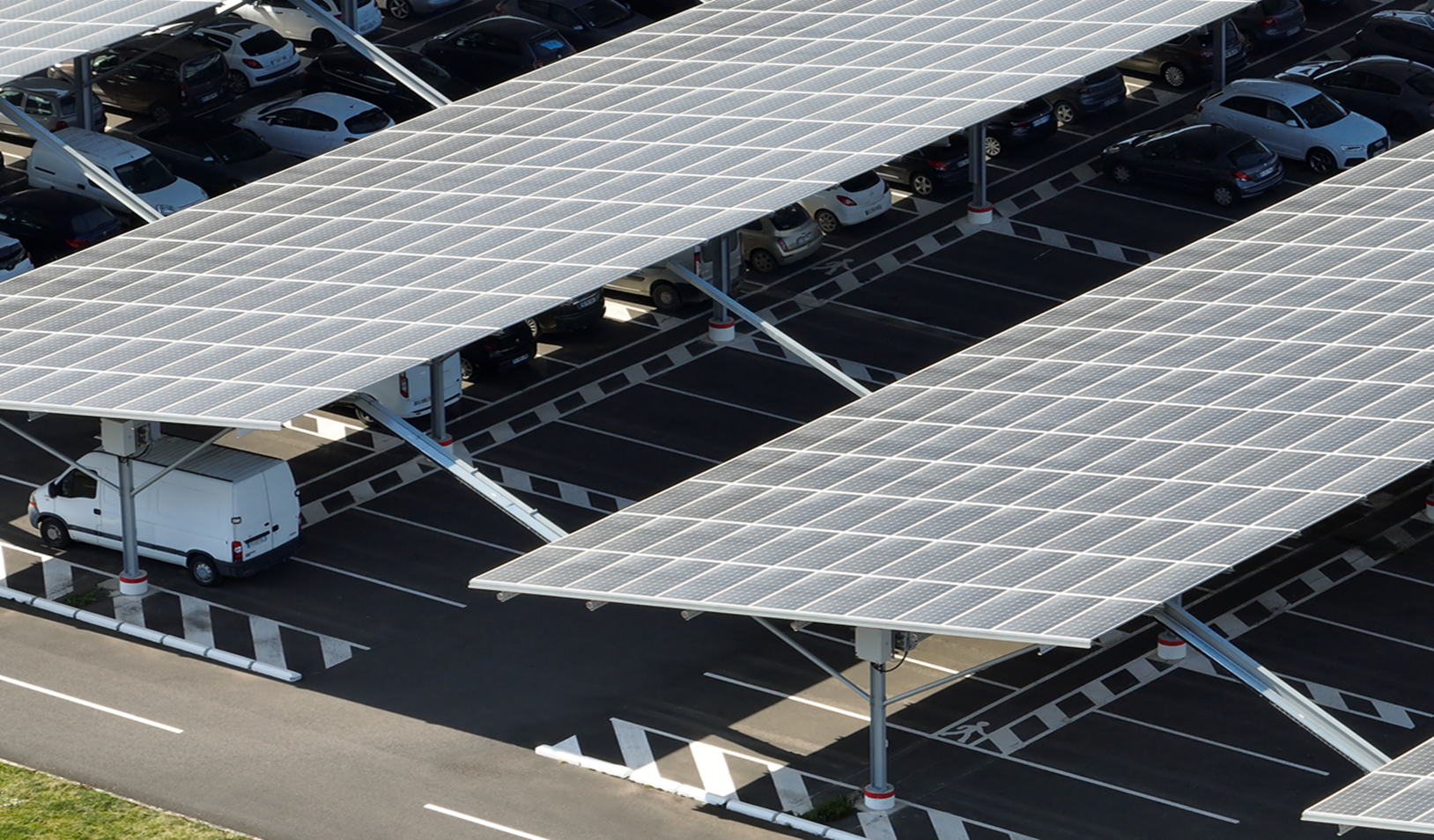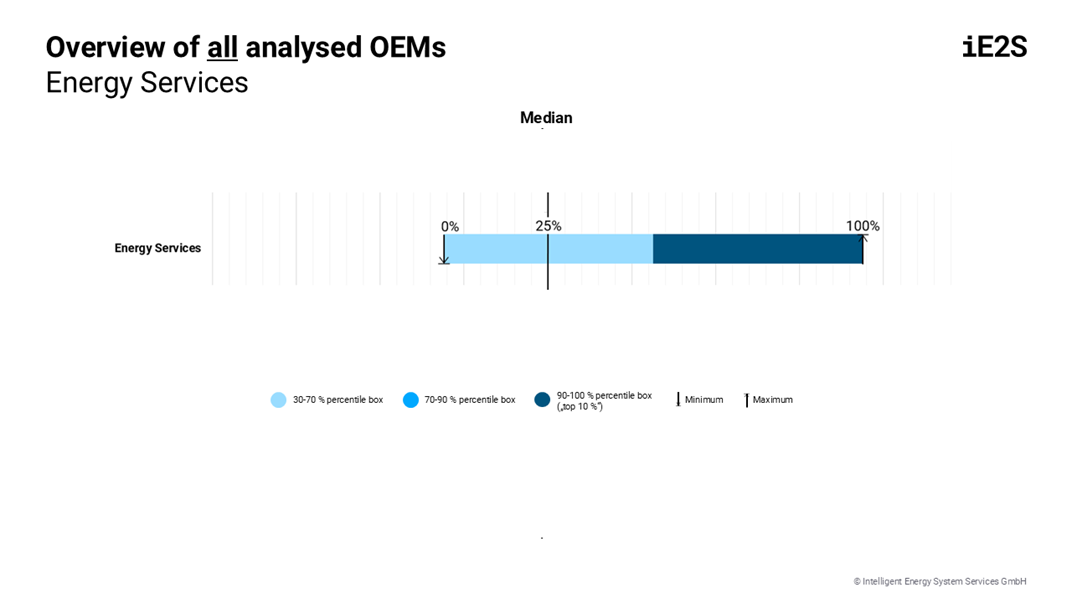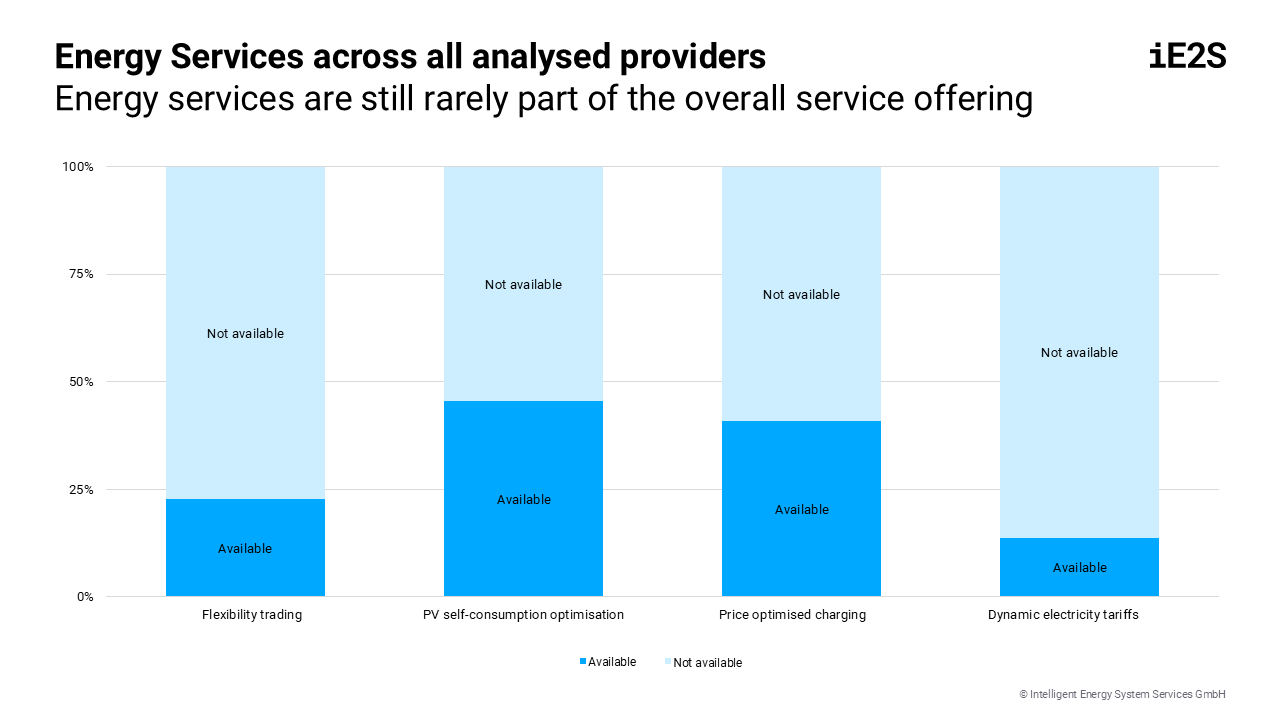E-Mobility Benchmarking – Energy Services
A new playing field for automotive manufacturers
As mobility undergoes transformation, intelligent energy management is becoming increasingly important. Our E-Mobility Benchmarking reveals how automotive manufacturers are integrating innovative services into their charging infrastructure—and what patterns can be derived from this development. The analysis provides valuable insights into trends, market potential, and strategic opportunities. Businesses gain a solid foundation for decision-making to position themselves for the future, leverage competitive advantages, and strengthen their role in an increasingly interconnected energy system.
With the growing adoption of electric vehicles, the demand for smart charging solutions extends far beyond traditional infrastructure. Energy Services enable a more efficient and cost-effective use of electricity by optimising charging processes and integrating them into the energy system. In our E-Mobility Benchmarking, we specifically analysed aspects such as PV self-consumption optimisation, price-optimised charging, flexibility trading, and dynamic electricity tariffs. The findings highlight which automotive manufacturers already offer these services and where significant potential for further development still exists.

E-Mobility meets the energy market
- Flexibility trading: Around 20% of automotive manufacturers incorporate flexibility trading, where electric vehicles actively interact with the energy system. Through smart charging and discharging (V2G), users can engage with the grid and generate additional revenue by selling surplus energy. Unlike other Energy Services, flexibility trading extends beyond mere consumption management, turning EVs into active players in the energy market. However, its limited adoption indicates that this concept has yet to reach widespread implementation.
- PV self-consumption optimisation: Around 20% of automotive manufacturers incorporate flexibility trading, where electric vehicles actively interact with the energy system. Through smart charging and discharging (V2G), users can engage with the grid and generate additional revenue by selling surplus energy. Unlike other Energy Services, flexibility trading extends beyond mere consumption management, turning EVs into active players in the energy market. However, its limited adoption indicates that this concept has yet to reach widespread implementation.
- Price optimised charging: Approximately 40% of automotive manufacturers offer an innovative charging system that takes advantage of time-of-use electricity pricing (TOU). This allows EVs to charge predominantly during low-tariff periods, leading to significant cost savings. However, the relatively slow adoption of this approach suggests that, while the industry is moving in the right direction, a unified standard has yet to emerge. For consumers, this means that charging cost optimisation varies by manufacturer, but it presents an attractive opportunity to benefit from fluctuating electricity prices—a practice that is also more environmentally friendly.
- Dynamic electricity tariffs by OEMs: The integration of dynamic electricity tariffs by automotive manufacturers is an emerging trend in e-mobility, though it remains limited in implementation. With a penetration rate of just 14% among the analysed OEMs, this is currently the least offered Energy Service. Dynamic tariffs allow EVs to charge automatically when electricity prices are at their lowest, using real-time electricity market data. While this can significantly reduce charging costs for users, grid operators benefit from enhanced grid stability due to demand balancing. The low adoption rate suggests that regulatory and organisational hurdles still need to be overcome for broader market acceptance.

Comprehensive energy services as your competitive edge
Our analysis reveals a clear divide in the market: while a small number of manufacturers have fully integrated Energy Services, the majority are lagging behind. With a median adoption rate of just 25%, most OEMs only implement individual solutions rather than a holistic approach. A mid-range performance in Energy Services is virtually non-existent—manufacturers either offer comprehensive solutions or lack essential services altogether. This indicates that Energy Services are not yet an industry standard, and the market is still being shaped by a few pioneering players.
What Does This Mean for Your Business?
Currently, no single Energy Service is integrated into more than 50% of OEM portfolios. However, the demand for a holistic energy management offering in the vehicle ecosystem is expected to rise significantly. This presents a strategic opportunity:
- Advisory expertise can help businesses guide their customers towards optimised charging behaviour.
- This supports lower energy costs and promotes sustainable action.
- Companies that invest early in smart energy management solutions will gain a decisive competitive advantage and position themselves as industry leaders.
Are you ready to strengthen your market position?
- How can you establish a sustainable competitive edge?
- Which technologies are crucial for your future strategy?
Let’s discuss how we can shape the future of e-mobility together—by identifying emerging trends and developing tailored strategies.
Your contact at IE2S for energy services: Lars Zehnder

I am excited to share more about
our E-Mobility Benchmarking!
Feel free to reach out
for further information.

Senior Consultant